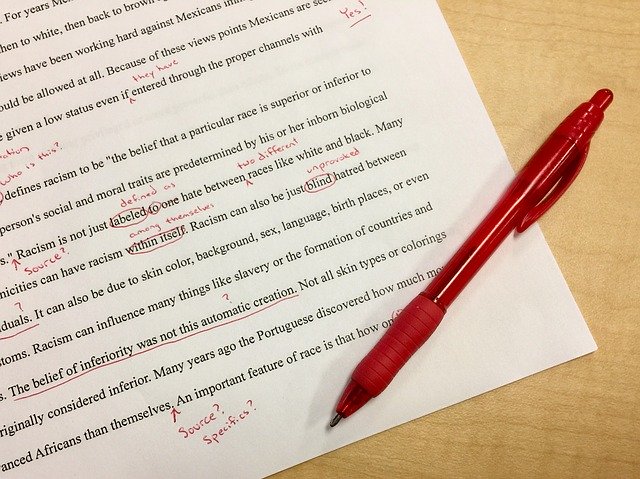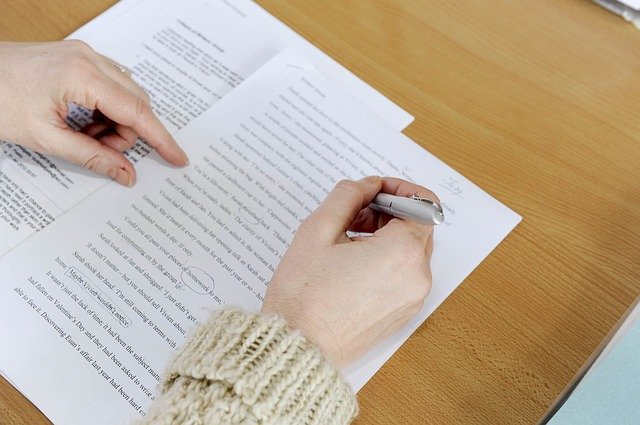We are getting closer to the final stages of completing your nonfiction book. Last week we covered writing the first draft of your book.
In today’s blog post we will cover how to edit and proofread your book so that it will be ready to be published. Not many of us can afford to hire a proofreader or editor so it helps if we know how to self-edit and proofread our own books.
Editing and Proofreading: What’s the Difference?
There is a difference between editing and proofreading. Editing is done on the first draft of your book. It involves making changes to the content in your book so that it is easy to read, easy to understand and so that the words flow smoothly.
While editing your book, you may be required to reduce the number of words written to improve readability and increase clarity. Editing helps to improve the quality of your writing. Editing your book takes longer than proofreading.

Proofreading, on the other hand, is done after you have edited and written a final draft of your book. On the final draft, proofreading involves looking for and correcting spelling and grammatical errors, punctuation mistakes, and typographical errors.
Why is it Important to Self-Edit and Proofread Your Book?
It is so important to have a well-written book because it will help you to generate sales and it ensures that your readers will leave positive reviews. Nobody wants to read a book filled with spelling and grammatical mistakes, unclear images, and poorly written text.
This could have a very negative impact on your sales and you could lose your readers. Other reasons why self-editing and proofreading your book are so important are as follows:
- Your book reflects you and your business, so your nonfiction book must be free from misspelled words, bad grammar, and typographical errors.
- A badly written book lacks professionalism and could damage your reputation.
- You need to edit and proofread your book because you want your book to be the best that it can be.
- Editing ensures that your book is direct and easy to understand by your readers.
- Failing to edit and proofread your book will make it difficult for you to generate sales.
- Editing and proofreading your book will make it ready for formatting so that it can be published.
Four Steps to Self-Edit and Proofread Your Nonfiction Book
Some writers struggle with completing their books because they want it to be perfect. They will spend months or even years trying to improve their work by constantly checking for bad grammar, spelling, and punctuation mistakes.
They constantly rewrite their book because they are not satisfied with their work. But there has to be a balance between perfection and publishing your book for the world to read. You don’t have to have a Ph.D. in English to edit and proofread your book.
Checking your book for errors and ensuring that it is clear and easy to read may sound like a long and boring task, but it has to be done. There are four steps you can take to self-edit and proofread your nonfiction book so that it is up to a saleable standard.
Step 1: Revise and Edit Your Book on Your Computer.

Read through your book from beginning to end. This is the opportunity to rearrange paragraphs, take out unnecessary words, add more material, re-order chapters, and delete lines.
This would also be the time to complete sections where you inserted notes to do more research. You may find a couple of spelling and grammatical mistakes while you’re editing. You can correct these errors also as you read through your first draft.
At this stage, however, you need to focus on ensuring that your chapters flow in a logical order, that you’ve filled in any missing sections and that your book is clear and easy to read and understand by your readers.
Step 2: Print a Hard Copy of Your Book.
Reading your book on a computer screen makes it easy to miss errors in the content. So at this stage, you need to print out your book and read it from beginning to end to make changes and to correct any mistakes you pick up.
When reading the printout of your book, you may discover that you need to rewrite a whole section to make it clearer or that you need to include another chapter. Write notes in the margin of any changes you need to make to each chapter.
Include sub-headings to make each section clearer and cut out any words or paragraphs that seem to be repetitious.
Don’t worry if your book seems short. It is better to have a short book that clearly shows the reader the solution to their problem than a longer book that the reader has to wade through to find what they are looking for.
Step 3: Make Corrections to Your Book and Print Out Another Hard Copy.

This is the third stage of self-editing and proofreading your book. If you need a break, step away from editing your book for a few days. Clear your mind, have some fun, or work on something else. This will help you to feel refreshed and ready to tackle your written content with a clear mind.
Read your entire book out loud. Read it from beginning to end. This will help you to discover sentences that may not be clear or contain grammatical errors. You may also find some spelling mistakes that you need to correct.
While you are reading, ensure that your text flows smoothly and that each sentence makes sense. Rewrite or cross out any words or phrases that cause you to stumble over the text.
Step 4: Use Grammarly to Proofread Your Book and Improve Your Writing
We have come to the final stage of self-editing and proofreading your book. Once you have finished your edits and you are satisfied that you cannot improve your book anymore, it is time to copy and paste each chapter into the Grammarly Editing Software.
Grammarly is a free proofreading app that millions of writers use to make their writing clear and effective. It corrects spelling and grammar mistakes, repetitive words, wrong comma usage, bad sentence structure, improves text and it even detects plagiarism.
If you don’t have it yet, you can download this software from Grammarly.com and it works on computers, tablets, and mobile phones. Grammarly can also be integrated into Microsoft Word so that it can pick up mistakes that you can correct easily in your Word document.
Hiring a proof reader and editor can be very expensive and not many writers can afford this type of service. Therefore, it is important that we know how to self-edit and proofread our own books so that they are clear, effective and easy to read.
Using the Grammarly app will also make it easy to pick up any spelling and grammatical errors which will help you to improve your writing.
Next week, I will show you how to format your book so that it is ready for self-publishing.



